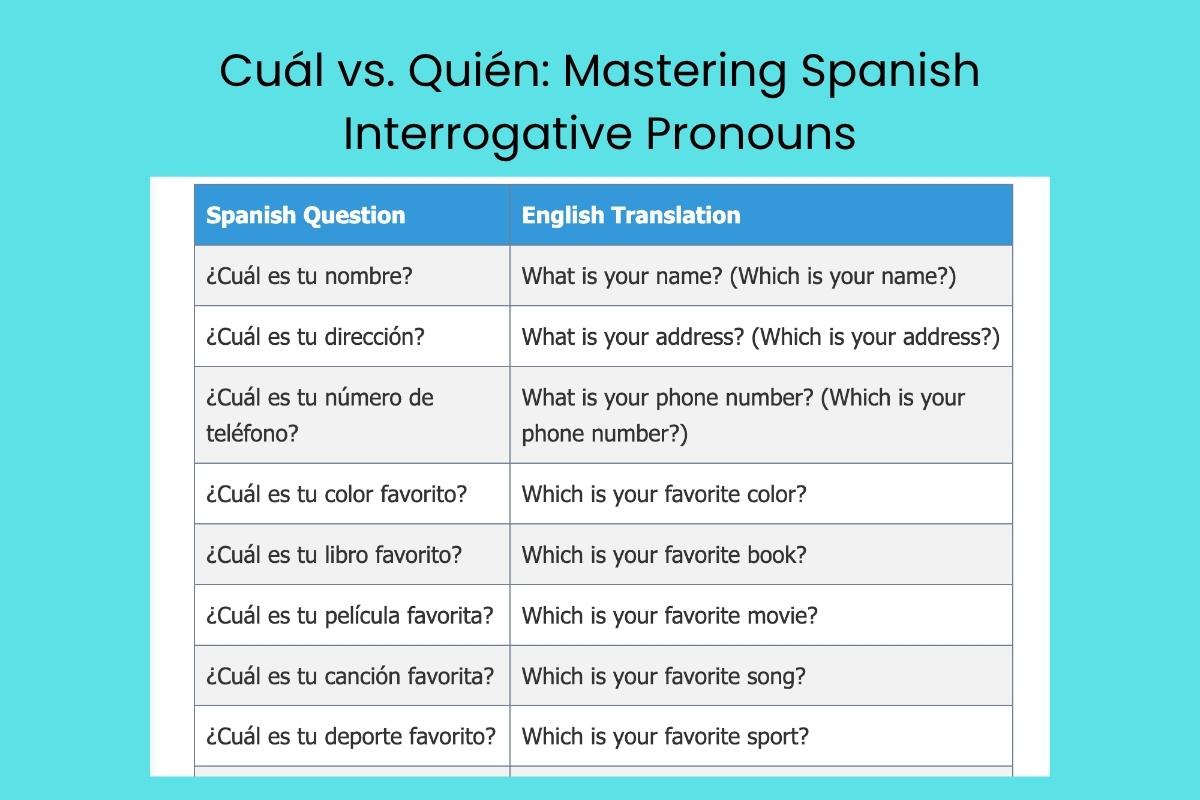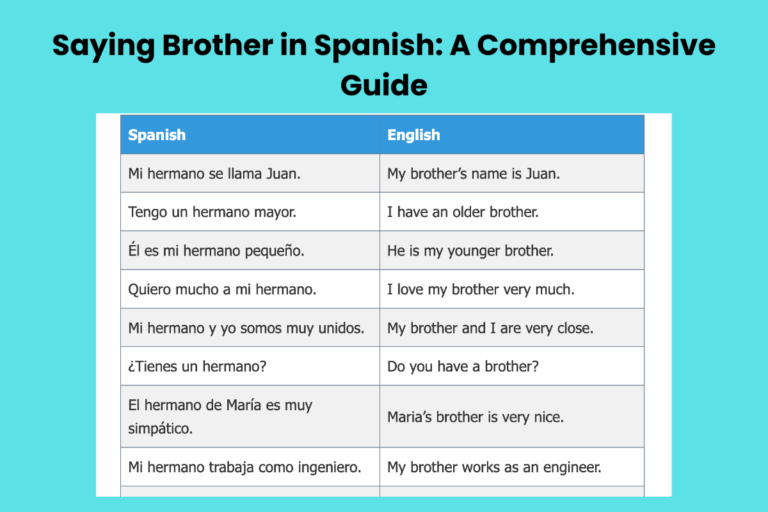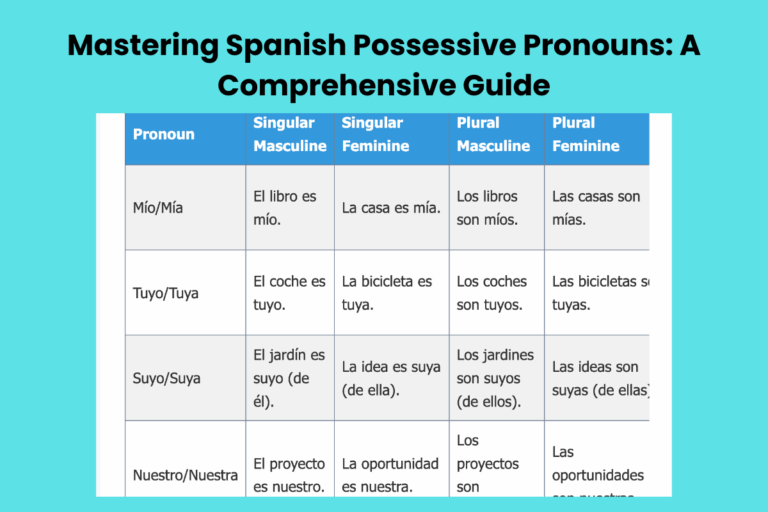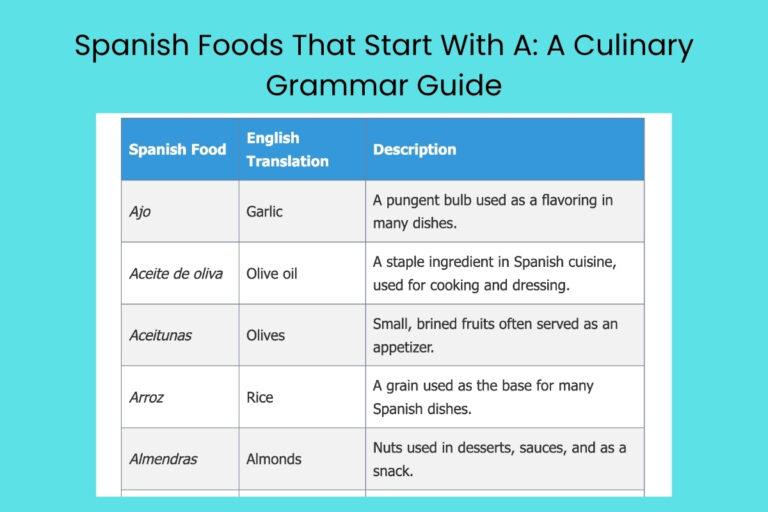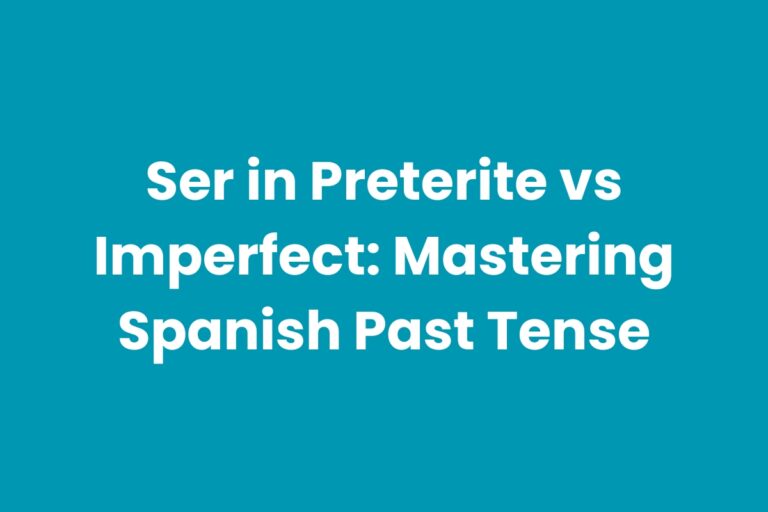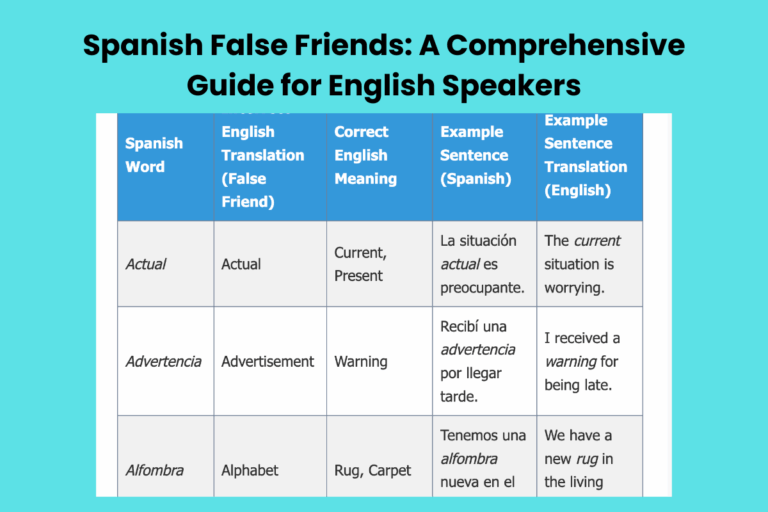Cuál vs. Quién: Mastering Spanish Interrogative Pronouns
Understanding the difference between cuál and quién is crucial for forming accurate and natural-sounding questions in Spanish. These interrogative pronouns, both translating to “which” or “who” in English, have distinct uses based on the context and the type of information being sought. This article will provide a comprehensive guide to mastering cuál and quién, covering their definitions, structural rules, usage scenarios, common mistakes, and advanced nuances. This guide is designed for Spanish learners of all levels, from beginners to advanced students, aiming to improve their question-forming abilities and overall fluency.
Table of Contents
- Introduction
- Definitions of Cuál and Quién
- Structural Breakdown
- Types and Categories
- Examples
- Usage Rules
- Common Mistakes
- Practice Exercises
- Advanced Topics
- FAQ
- Conclusion
Definitions of Cuál and Quién
Understanding the core definitions of cuál and quién is the first step to mastering their usage. These interrogative pronouns serve different purposes in Spanish, and knowing when to use each one is essential for clear communication.
Cuál
Cuál is an interrogative pronoun used to ask about the identity, selection, or specification of something from a limited group or set. It often implies a choice or a distinction between multiple options. Essentially, cuál asks “which one?” or “which ones?” It’s important to note that cuál is used when there’s a finite or known set of possibilities. It can also be used to ask for a definition of something.
For example, if you’re looking at a selection of books, you would use cuál to ask which book someone prefers. The answer would come from the specific set of books present.
Quién
Quién is an interrogative pronoun used to ask about the identity of a person or people. It translates to “who” or “whom” in English. Unlike cuál, quién exclusively refers to individuals. It can be used to ask about a single person (quién) or multiple people (quiénes). The use of quién indicates that you are seeking to identify a person or people associated with a particular action or situation.
For example, if you want to know who painted a specific artwork, you would use quién. The answer will always be a person or a group of people.
Structural Breakdown
The structural breakdown of cuál and quién involves understanding how they are used within a sentence, including their placement and any accompanying words or phrases.
Cuál Structure
The basic structure using cuál is:
¿Cuál + ser (conjugated) + subject/noun?
Or, with a preposition:
¿Cuál + de + [noun phrase] + ser (conjugated) + subject?
Cuál can also be followed by a noun, acting as an interrogative adjective:
¿Cuál + noun + verb + subject?
For example:
- ¿Cuál es tu libro favorito? (Which is your favorite book?)
- ¿Cuál de los coches es tuyo? (Which of the cars is yours?)
- ¿Cuál película te gusta más? (Which movie do you like more?)
Quién Structure
The basic structure using quién is:
¿Quién + verb + subject?
Or, with a preposition:
¿A/De/Con + quién + verb + subject?
For example:
- ¿Quién es el director? (Who is the director?)
- ¿Quién vino a la fiesta? (Who came to the party?)
- ¿Con quién hablas? (Who are you talking to?)
Types and Categories
Understanding the different types and categories of questions that can be formed with cuál and quién helps in applying them correctly in various contexts.
Types of Questions with Cuál
- Identifying from a Set: Asking to identify a specific item or person from a limited group.
- ¿Cuál es tu color favorito? (Which is your favorite color?)
- ¿Cuál de estas camisas te gusta más? (Which of these shirts do you like more?)
- Asking for a Definition: Seeking a definition or explanation of something.
- ¿Cuál es la definición de “empatía”? (What is the definition of “empathy”?)
- ¿Cuál es el propósito de este proyecto? (What is the purpose of this project?)
- Expressing a Preference: Inquiring about someone’s preference among options.
- ¿Cuál prefieres, café o té? (Which do you prefer, coffee or tea?)
- ¿Cuál es mejor, esta película o la otra? (Which is better, this movie or the other?)
Types of Questions with Quién
- Identifying a Person: Asking for the identity of a person.
- ¿Quién es el profesor de español? (Who is the Spanish teacher?)
- ¿Quién llamó por teléfono? (Who called on the phone?)
- Asking About Relationships: Inquiring about someone’s relationship or association with another person.
- ¿Quién es tu mejor amigo? (Who is your best friend?)
- ¿Quiénes son tus padres? (Who are your parents?)
- Determining Responsibility: Finding out who is responsible for an action.
- ¿Quién hizo esto? (Who did this?)
- ¿Quiénes organizaron la fiesta? (Who organized the party?)
Examples
The following examples illustrate the correct usage of cuál and quién in various contexts. Pay close attention to the situations in which each pronoun is used.
Examples with Cuál
The table below provides numerous examples of how to use cuál in different question structures. Note how cuál is always used when there is an implied selection from a set of options.
| Spanish Question | English Translation |
|---|---|
| ¿Cuál es tu nombre? | What is your name? (Which is your name?) |
| ¿Cuál es tu dirección? | What is your address? (Which is your address?) |
| ¿Cuál es tu número de teléfono? | What is your phone number? (Which is your phone number?) |
| ¿Cuál es tu color favorito? | Which is your favorite color? |
| ¿Cuál es tu libro favorito? | Which is your favorite book? |
| ¿Cuál es tu película favorita? | Which is your favorite movie? |
| ¿Cuál es tu canción favorita? | Which is your favorite song? |
| ¿Cuál es tu deporte favorito? | Which is your favorite sport? |
| ¿Cuál es tu comida favorita? | Which is your favorite food? |
| ¿Cuál es tu postre favorito? | Which is your favorite dessert? |
| ¿Cuál es tu clase favorita? | Which is your favorite class? |
| ¿Cuál es tu país favorito? | Which is your favorite country? |
| ¿Cuál de estos zapatos te gusta más? | Which of these shoes do you like more? |
| ¿Cuál de estos coches es tuyo? | Which of these cars is yours? |
| ¿Cuál prefieres, el rojo o el azul? | Which do you prefer, red or blue? |
| ¿Cuál es la capital de España? | What is the capital of Spain? |
| ¿Cuál es la definición de “sarcasmo”? | What is the definition of “sarcasm”? |
| ¿Cuál es el problema? | What is the problem? (Which is the problem?) |
| ¿Cuál es la solución? | What is the solution? (Which is the solution?) |
| ¿Cuál es tu opinión? | What is your opinion? (Which is your opinion?) |
| ¿Cuál es el mejor camino para llegar allí? | What is the best way to get there? (Which is the best way to get there?) |
| ¿Cuál es el precio de este libro? | What is the price of this book? (Which is the price of this book?) |
| ¿Cuál es la fecha de hoy? | What is today’s date? (Which is today’s date?) |
| ¿Cuál es tu meta principal? | What is your main goal? |
Examples with Quién
The table below presents examples of using quién to inquire about people. Remember that quién and quiénes are exclusively used when referring to individuals or groups of individuals.
| Spanish Question | English Translation |
|---|---|
| ¿Quién es el presidente? | Who is the president? |
| ¿Quién es tu madre? | Who is your mother? |
| ¿Quién es tu padre? | Who is your father? |
| ¿Quién es tu hermano? | Who is your brother? |
| ¿Quién es tu hermana? | Who is your sister? |
| ¿Quién es tu mejor amigo? | Who is your best friend? |
| ¿Quién es tu profesor de matemáticas? | Who is your math teacher? |
| ¿Quién es tu cantante favorito? | Who is your favorite singer? |
| ¿Quién es tu actor favorito? | Who is your favorite actor? |
| ¿Quién es el autor de este libro? | Who is the author of this book? |
| ¿Quién llamó por teléfono? | Who called on the phone? |
| ¿Quién está en la puerta? | Who is at the door? |
| ¿Quién sabe la respuesta? | Who knows the answer? |
| ¿Quién va a venir a la fiesta? | Who is going to come to the party? |
| ¿Quién te dijo eso? | Who told you that? |
| ¿A quién viste ayer? | Who did you see yesterday? |
| ¿De quién es este libro? | Whose book is this? |
| ¿Con quién hablas? | Who are you talking to? |
| ¿Quiénes son tus padres? | Who are your parents? |
| ¿Quiénes son tus amigos? | Who are your friends? |
| ¿Quiénes van a participar? | Who is going to participate? |
| ¿Quiénes son los responsables? | Who are the responsible ones? |
Combined Usage Examples
This table combines examples using both cuál and quién to illustrate scenarios where the choice between them is crucial. Notice the difference in meaning and context.
| Spanish Question | English Translation | Explanation |
|---|---|---|
| ¿Cuál es tu nombre? | What is your name? (Which is your name?) | Asks for the name from a set of possible names. |
| ¿Quién es el director? | Who is the director? | Asks for the identity of the director. |
| ¿Cuál de los estudiantes es el mejor? | Which of the students is the best? | Selects from a group of students. |
| ¿Quién es el mejor estudiante? | Who is the best student? | Asks for the identity of the best student. |
| ¿Cuál es el coche más rápido? | Which is the fastest car? | Identifies the fastest car from a set of cars. |
| ¿Quién conduce el coche más rápido? | Who drives the fastest car? | Asks for the person who drives the car. |
| ¿Cuál es tu opinión sobre este tema? | What is your opinion on this topic? (Which is your opinion on this topic?) | Asks for an opinion from a set of possible opinions. |
| ¿Quién sabe algo sobre este tema? | Who knows something about this topic? | Asks for the person who has knowledge. |
| ¿Cuál es tu razón para venir? | What is your reason for coming? (Which is your reason for coming?) | Asks for a specific reason from a range of possible reasons. |
| ¿Quién te invitó a venir? | Who invited you to come? | Asks for the person who extended the invitation. |
Usage Rules
Understanding the rules for using cuál and quién will help you apply them correctly and avoid common mistakes. These rules cover the contexts in which each pronoun is appropriate and any grammatical considerations related to their usage.
Rules for Using Cuál
- Use cuál when selecting from a limited set: If you are asking someone to choose from a specific group of options, use cuál. For example, “¿Cuál prefieres, el café o el té?” (Which do you prefer, coffee or tea?).
- Use cuál with the verb ser: Cuál is frequently used with the verb ser to ask for definitions or descriptions. For example, “¿Cuál es tu nombre?” (What is your name?).
- Use cuál de when specifying from a larger group: To narrow down the selection from a larger group, use “cuál de” followed by a noun phrase. For example, “¿Cuál de los libros es tuyo?” (Which of the books is yours?).
- Agreement: Cuál does not change form based on gender or number.
Rules for Using Quién
- Use quién when referring to people: Always use quién when asking about the identity of a person or people. For example, “¿Quién es el profesor?” (Who is the teacher?).
- Use quiénes for plural: When referring to multiple people, use the plural form quiénes. For example, “¿Quiénes son tus amigos?” (Who are your friends?).
- Use prepositions with quién: When the question requires a preposition, place it before quién. For example, “¿A quién le diste el libro?” (To whom did you give the book?).
Exceptions and Special Cases
While the rules above provide a solid foundation, there are exceptions and special cases to consider. These nuances can further refine your understanding and usage of cuál and quién.
- Using cuál to ask ‘what’: Although qué is generally used for “what,” cuál can be used with the verb ser to ask for a definition or explanation. “¿Cuál es la razón?” (What is the reason?).
- Indirect questions: In indirect questions, quién and cuál are used similarly to direct questions, but without the question marks and with a different word order. For example, “No sé quién es” (I don’t know who it is) vs. “¿Quién es?” (Who is it?).
Common Mistakes
Avoiding common mistakes is essential for mastering any grammar concept. Here are some frequent errors made by Spanish learners when using cuál and quién, along with corrections.
| Incorrect | Correct | Explanation |
|---|---|---|
| ¿Quién es tu color favorito? | ¿Cuál es tu color favorito? | Quién refers to people, while cuál is used for selection from a set. |
| ¿Cuál es el profesor? | ¿Quién es el profesor? | Cuál is not used to identify a person directly; quién is used instead. |
| ¿Cuál son tus amigos? | ¿Quiénes son tus amigos? | When referring to multiple people, use quiénes, the plural form of quién. |
| ¿A cuál le diste el libro? | ¿A quién le diste el libro? | When referring to a person, use a quién, not a cuál. |
| ¿Cuál es la persona que te ayudó? | ¿Quién es la persona que te ayudó? | Use quién to identify a person directly. |
Practice Exercises
Practice is key to mastering cuál and quién. The following exercises will help you reinforce your understanding and improve your ability to use these interrogative pronouns correctly.
Exercise 1: Choose Cuál or Quién
Choose the correct interrogative pronoun (cuál or quién) to complete each sentence.
| Question | Answer |
|---|---|
| 1. ¿_____ es tu nombre? | Cuál |
| 2. ¿_____ es el director de la escuela? | Quién |
| 3. ¿_____ prefieres, el café o el té? | Cuál |
| 4. ¿_____ te llamó ayer? | Quién |
| 5. ¿_____ es tu libro favorito? | Cuál |
| 6. ¿A _____ viste en la fiesta? | Quién |
| 7. ¿_____ de estos coches es tuyo? | Cuál |
| 8. ¿_____ sabe la respuesta? | Quién |
| 9. ¿_____ es la capital de Francia? | Cuál |
| 10. ¿_____es tu profesor de inglés? | Quién |
Exercise 2: Translate the Questions
Translate the following English questions into Spanish, using either cuál or quién.
| English Question | Spanish Translation |
|---|---|
| 1. Who is your favorite actor? | ¿Quién es tu actor favorito? |
| 2. Which is your favorite song? | ¿Cuál es tu canción favorita? |
| 3. Who is coming to the party? | ¿Quién viene a la fiesta? |
| 4. Which of these dresses do you like? | ¿Cuál de estos vestidos te gusta? |
| 5. Who told you that? | ¿Quién te dijo eso? |
| 6. What is the problem? | ¿Cuál es el problema? |
| 7. Who are your parents? | ¿Quiénes son tus padres? |
| 8. Which is the best restaurant? | ¿Cuál es el mejor restaurante? |
| 9. Who is responsible for this? | ¿Quién es responsable de esto? |
| 10. What is your opinion? | ¿Cuál es tu opinión? |
Exercise 3: Fill in the Blanks
Fill in the blanks with the correct form of cuál or quién, paying attention to number and context.
| Question | Answer |
|---|---|
| 1. ¿_____ son los estudiantes nuevos? | Quiénes |
| 2. ¿_____ es la respuesta correcta? | Cuál |
| 3. ¿A _____ vas a invitar a la boda? | Quién |
| 4. ¿_____ de estas opciones eliges? | Cuál |
| 5. ¿_____ escribió este libro? | Quién |
| 6. ¿_____ es tu número de teléfono? | Cuál |
| 7. ¿_____ son tus cantantes favoritos? | Quiénes |
| 8. ¿_____ es el mejor jugador de fútbol? | Quién |
| 9. ¿_____ es la fecha de independencia? | Cuál |
| 10. ¿_____ es tu materia preferida? | Cuál |
Advanced Topics
For advanced learners, understanding the nuances and complexities of cuál and quién can further enhance their fluency and accuracy in Spanish.
Cuál vs. Qué
While cuál is used to ask “which” or “what” when selecting from a known set, qué is generally used to ask “what” in a broader sense, often without a specific set of options in mind. Understanding the distinction between cuál and qué is essential for forming accurate questions.
Qué is used to ask for a definition, an explanation, or general information when there isn’t a specific selection implied. For example, “¿Qué haces?” (What are you doing?).
However, when followed by the verb *ser*, *cuál* is generally used when inquiring about information that helps identify someone or something, implying a selection from various possibilities. For example, *¿Cuál es tu nombre?* (What is your name?).
Complex Structures with Quién
Quién can be used in more complex sentence structures, including relative clauses and indirect questions. Mastering these structures will allow you to express more nuanced and sophisticated questions.
For example, “El hombre a quien viste ayer es mi hermano” (The man whom you saw yesterday is my brother). Here, quien acts as a relative pronoun, referring back to “el hombre.”
FAQ
Here are some frequently asked questions about cuál and quién, along with detailed answers to clarify common points of confusion.
- Q: When should I use cuál instead of qué?
A: Use cuál when you are asking someone to choose from a limited set of options or when you are asking for a definition with the verb *ser* that implies a selection or identification. Use qué for more general questions where a specific selection is not implied, or when asking for general information or an explanation.
- Q: Can cuál be used to ask for someone’s name?
A: Yes, cuál is commonly used to ask for someone’s name: “¿Cuál es tu nombre?”. This implies that a name is a selection from possible names. Using *qué* in this context, while not strictly incorrect, sounds less natural.
- Q: Is quiénes only used for plural nouns?
A: Yes, quiénes is the plural form of quién and is used exclusively when referring to multiple people. If you are asking about a single person, use quién.
- Q: How do I use prepositions with quién?
A: Place the preposition before quién. For example, “¿A quién le diste el regalo?” (To whom did you give the gift?). Common prepositions used with quién include a, de, con, and para.
- Q: What’s the difference between “¿Cuál es…?” and “¿Qué es…?”?
A: “¿Cuál es…?” is used to ask for a selection from a set of possibilities or to identify something. “¿Qué es…?” is used to ask for a definition or a general description without implying a selection. For example, “¿Cuál es tu color favorito?” (Which is your favorite color?) vs. “¿Qué es el arte?” (What is art?).
- Q: Can I use cuál to ask “What time is it?”
A: No, you should use qué for asking the time: ¿Qué hora es?. Cuál is not appropriate in this context.
- Q: How do I avoid confusing cuál and quién?
A: Remember that quién always refers to people, while cuál is used for selections, definitions, or descriptions. Always consider whether you are asking about a person or something else.
- Q: Is it ever correct to use quién with ser to ask about a thing?
A: No, quién is exclusively used with people. If you are asking about a thing, you should use cuál or qué, depending on the context.
- Q: What is the difference between “a quién” and “con quién”?
A: “A quién” means “to whom” and is used when the person is the indirect object of the verb. “Con quién” means “with whom” and is used when asking about someone you are doing something with. For example: “A quién diste el libro?” (To whom did you give the book?) vs. “Con quién fuiste al cine?” (With whom did you go to the cinema?).
- Q: Can “cuál” be used in indirect questions?
A: Yes, “cuál” can be used in indirect questions. For example, “No sé cuál es la respuesta.” (I don’t know what the answer is.) The word order and presence of question marks differ from direct questions, but the core meaning and usage remain similar.
Conclusion
Mastering the distinction between cuál and quién is essential for forming accurate and natural-sounding questions in Spanish. While both pronouns can translate to “which” or “who” in English, their usage depends on whether you are asking about the identity of a person or selecting from a limited set of options. By understanding the definitions, structural rules, and usage contexts of cuál and quién, you can significantly improve your question-forming abilities and overall fluency in Spanish.
Remember to practice regularly and pay close attention to the contexts in which each pronoun is used. By avoiding common mistakes and exploring advanced topics, you can further refine your understanding and confidently use cuál and quién in a variety of situations. Keep practicing and don’t be afraid to make mistakes – they are a natural part of the learning process!

